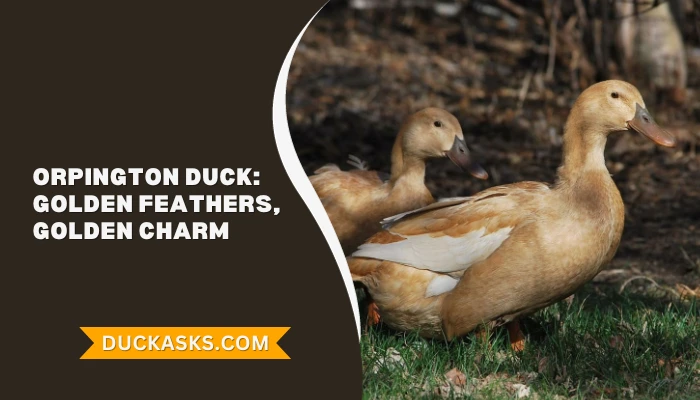Blue Swedish Duck: History And Breed Guide
The Blue Swedish duck is the ultimate multipurpose duck for breeding. It can be a great pet for families, it produces hundreds of consumable eggs per year and has eye-catching traits for decoration. Plus, it’s super easy to care for and maintain these ducks while raising them.
In this article, we will explore everything related to the breeding and raising of Blue Swedish ducks. Whether you have little or considerable experience as a duck fancier, this article will provide plenty of insightful details to ensure successful breeding.
Looking for more articles about duck breed:
Blue Swedish Duck Profile
| Name | Blue Swedish Duck |
|---|---|
| Scientific Name | Anas Platyrhynchos Domesticus |
| Common Names | Swedish Blue Blue Swedish Svensk blå anka |
| Origin | Swedish Pomerania (now North-West Poland and North-East Germany) |
| Size | Medium |
| Weight | 6 and 9 Pounds |
| Lifespan | 8 – 12 Years |
| Feather Color | Diverse |
| Climate Tolerance | High |
| Behavior | Calm |
| Flight | Can’t fly |
| Breeding and Maintenance | Easy |
| Easy to Keep? | Yes |
| Duck Purpose | Egg layers, meat productivity, decoration, ornamental, pet |
| Egg Productivity | High |
| Rarity | Rare |
Blue Swedish Duck Overview
The Blue Swedish duck is a multipurpose bird. You can breed and raise this duck as a pet, for decoration, meat production, or as egg layers.
History, and Origins of Blue Swedish Ducks
The origin of this duck breed dates back to 1835 in Swedish Pomerania, which is now part of Poland and Germany.
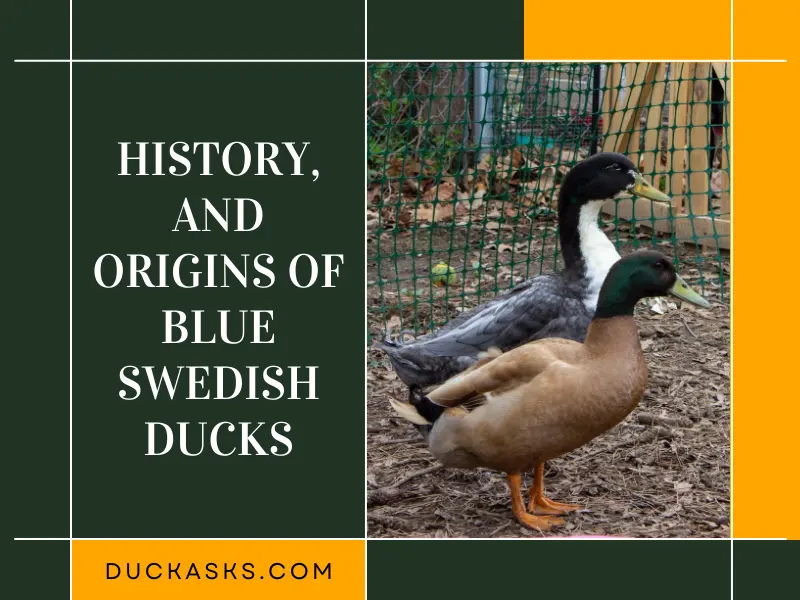
Then, the breed arrived in the United States in 1884. It wouldn’t be until 1904 that the “Swedish” blue variety gained the Standard of Perfection within the American Poultry Association.
Fast forward to 2007, the Food and Agriculture Organization of the United Nations assigned critical status to the conservation effort to protect the Swedish Blue. Sweden followed suit by classifying the breed as endangered.
Physical Characteristics and Features
Learn about the physical features of Blue Swedish ducks to identify them easily.

Appearance and Body Structure
The Blue Swedish duck is a bird of medium size. Typically, the ducks can weigh between 6 and 9 pounds, with a round body and a plump and full-breasted build.
Similarly, the heads are long and oval, whereas the backs are flat, straight, and broad. They carry their body at a 20° angle horizontal.
Make Blue Swedish ducks have green bills and heads of a darker blue color. On the other hand, the females have bodies, heads, and bills with gray and blue shades. One similarity between the two is the white bib, which is a characteristic both share.
Feather Colors
Generally, the feathers of Blue Swedish Ducks are blue. However, the ducks have white feathers in areas like the breasts and neck.
While there are also Black, Silver, and Splashed colored ducks, the Blue is the only one accepted as the standard.
Differences Between Blue Swedish Ducks & Blue Swedish Drakes
Blue Swedish ducks refers to the female and males of the species, whereas Blue Swedish drake is a term that refers only to the adult male duck.
Behavior and Traits of Blue Swedish Ducks
The pleasant behavior of Blue Swedish ducks is one of the reasons why they’re an incredible breed to raise. Here’s what you need to know about them.
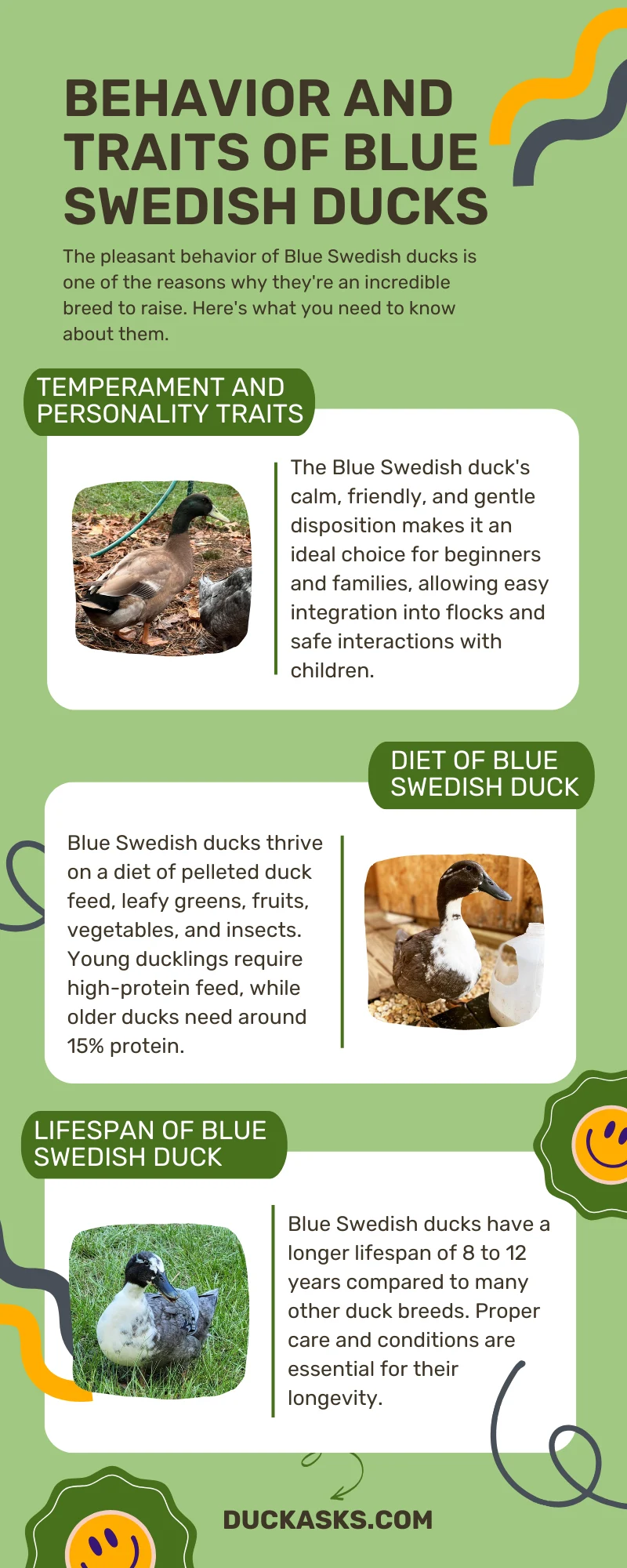
Temperament and Personality Traits
This breed is calm and friendly, often shy and reserved. As a result, the Blue Swedish duck can join flocks with ease. Furthermore, the gentle personality of these ducks allows children to be around them safely.
All these reasons make these ducks a suitable first option for beginners and breeders with families.
Diet
Like most birds, this breed of ducks enjoys eating bugs and insects. However, it’s better to complement this diet with more suitable food like pelleted duck feed, leafy greens, fruits, vegetables, zucchini, and corn. This combination of food will make the diet healthier and more beneficial.
Still, the age of the duck is crucial to know what to feed them. Young ducklings under a few weeks old will need duck starter crumbles with 18 to 20% protein. Once the duck is between three and twenty weeks old, the protein level should be at least 15%.
Lifespan
Blue Swedish ducks can live between eight and twelve years. This lifespan range is above the average, as most other duck breeds live five or ten years. Naturally, you must create conditions to ensure these ducks live for as long as possible.
Breeding and Raising
The female Blue Swedish duck will be ready to lay eggs in six months, but some cases require seven months. Following courtship and breeding, the female will lay the eggs and incubate them for 28 days until they hatch.
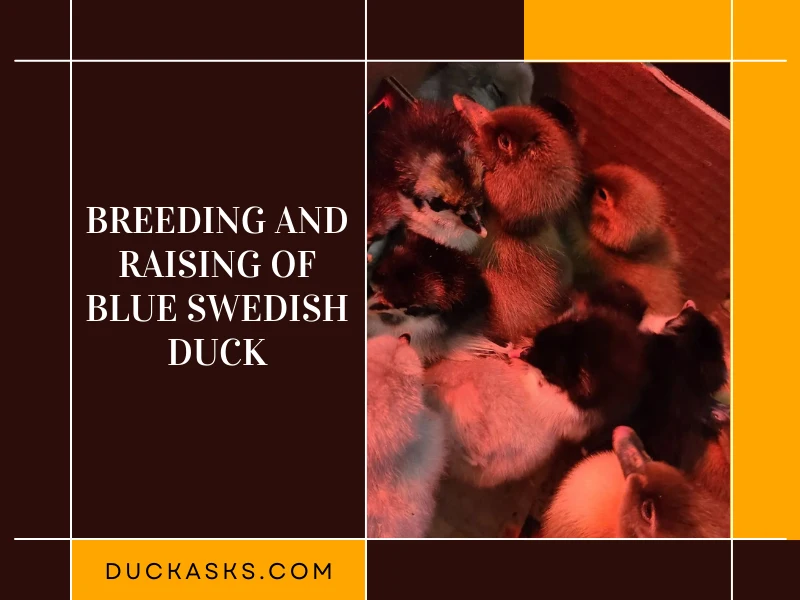
Blue Swedish hens are good at foraging and have strong maternal instincts. These characteristics benefit the ducklings, as they have higher chances of survival.
Some Tips and Considerations for Successful Breeding
- Learn about the average price and buy from official breeders.
- Remember that you may need to buy a minimum ducklings amount. The minimum you can buy will depend on the provider, so you must plan in advance.
- The ducklings of two Blue Swedish ducks will not always be completely blue. Instead, 50% of the eggs will hatch blue, 25% black (Black Swedish), and the remaining 25% light gray colors (Splashed).
- If you want to get 100% blue offspring, you must cross Black to Silver.
- Identify sicknesses and health problems and take care of the situation quickly to avoid further issues within the flock.
Housing Requirements
Suitable housing for Blue Swedish ducks must be in a cool place with plenty of shadow and ventilation. The area must also include features like a pond, which will help the ducks feel more comfortable.
Another thing to consider is using a brooder. This brooder must be away and secure from mature ducks, as it will keep the ducklings safe from accidents. Once the ducklings become completely feathered, they will be ready to move to the coop with the rest of the flock.
The Egg Productivity of Blue Swedish Ducks
The Blue Swedish hen can lay between 80 and 180 eggs yearly. These eggs are white, but others can have green, blue, or grey shades. Also, the eggs weigh from 65 to 90 grams, which makes them heavy. Therefore, the nutritious quality of the eggs is high.
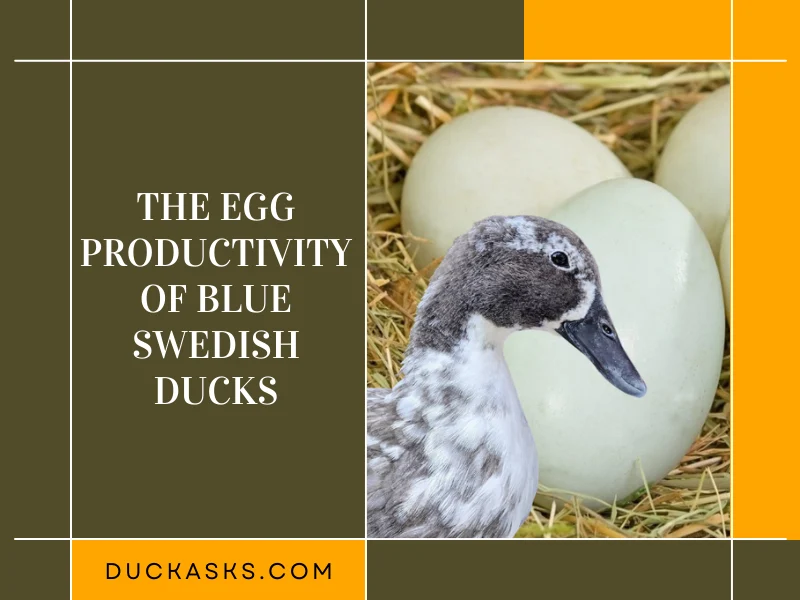
Blue Swedish eggs are healthy, providing protein, amino acids, cholesterol, fats, vitamins, and minerals. Nonetheless, the high cholesterol can trigger allergies in individuals vulnerable to these conditions, especially children and infants.
As a result, consumers need to be aware of the risks of eating these eggs to avoid potential risks.
The Meat Quality & Popularity of Blue Swedish Ducks
Meat production is one of the primary reasons why breeders raise the Blue Swedish duck. This duck is not large, but it can weigh between 7 and 9 pounds of table weight in about 16 weeks.
The Swedish Blue duck produces tender and delicious meat, resulting from the consumption of natural field food. Ideally, the most appropriate method to cook this duck is to fry the meat at around 165° F. You can separate the breasts, legs, thighs, heart, liver, and gizzard.
FAQ
- How much are Blue Swedish ducks worth?
The price of Blue Swedish ducks varies, starting from $7 for a male duckling, and approximately $11 for a female duck.
- Can Blue Swedish ducks fly?
No, Blue Swedish ducks cannot fly. The body structure of this duck makes it a heavy bird, and its wings cannot support the weight.
- Are Blue Swedish Ducks Good for Small-Scale Farming?
Blue Swedish ducks are ideal ducks for small-scale farming. These ducks are beneficial for this purpose for many reasons. For example, they are easy to maintain and produce quality meat and eggs. Plus, the calm and gentle temperament of the Blue Swedish duck makes them hassle-free.
Conclusion
The Blue Swedish duck is a satisfying and pleasant breed of ducks to raise. Once they grow, the benefits these ducks provide are rewarding. You can consume delicious meat, enjoy the eggs, or make the ducks a part of the family as pets.
If you found this article helpful, you can check out socials on Facebook, Twitter, and Pinterest for more informative pieces to help you fancy ducks and birds.
Image Credit:
- https://www.instagram.com/mythreeduckduckgrayducks/
- https://www.instagram.com/laceyromb/
- https://www.instagram.com/nott_a_farm_/
- https://www.instagram.com/coosawatteetradingpost/




